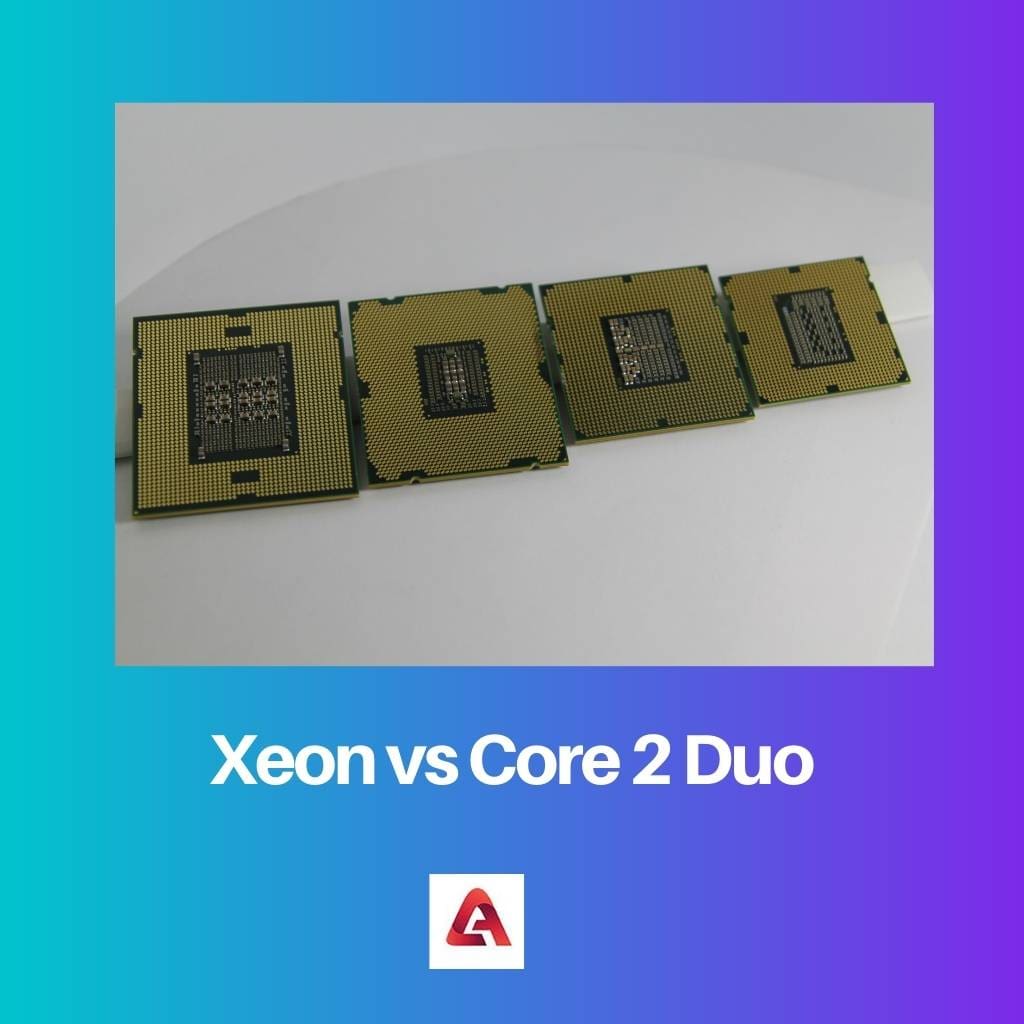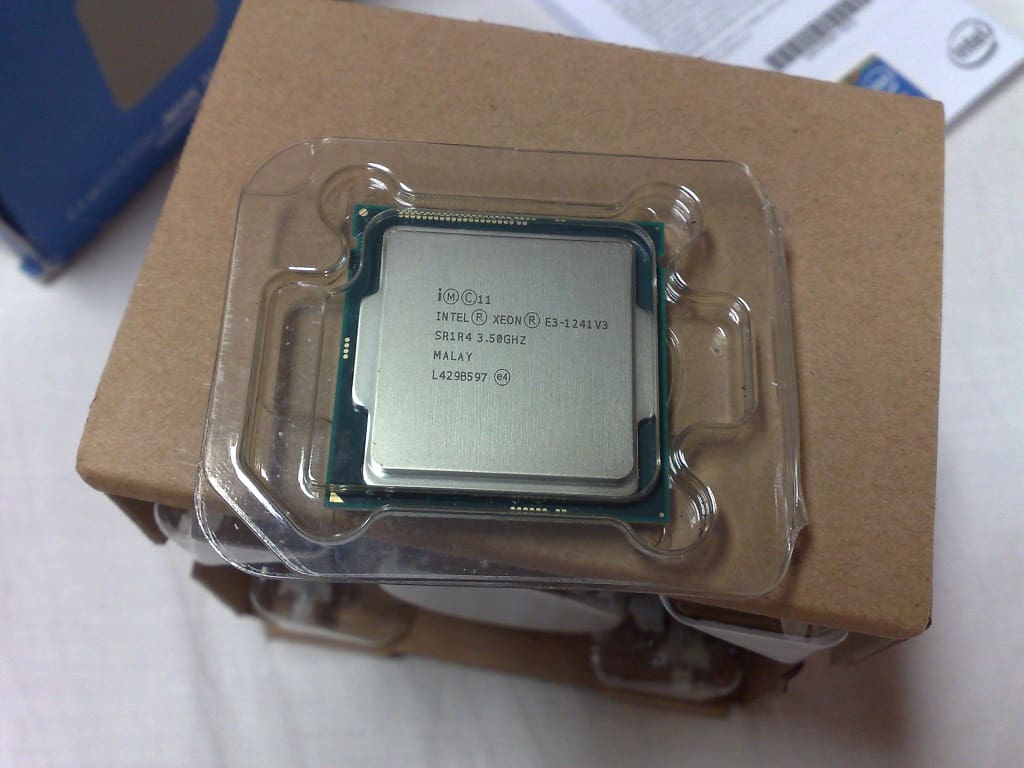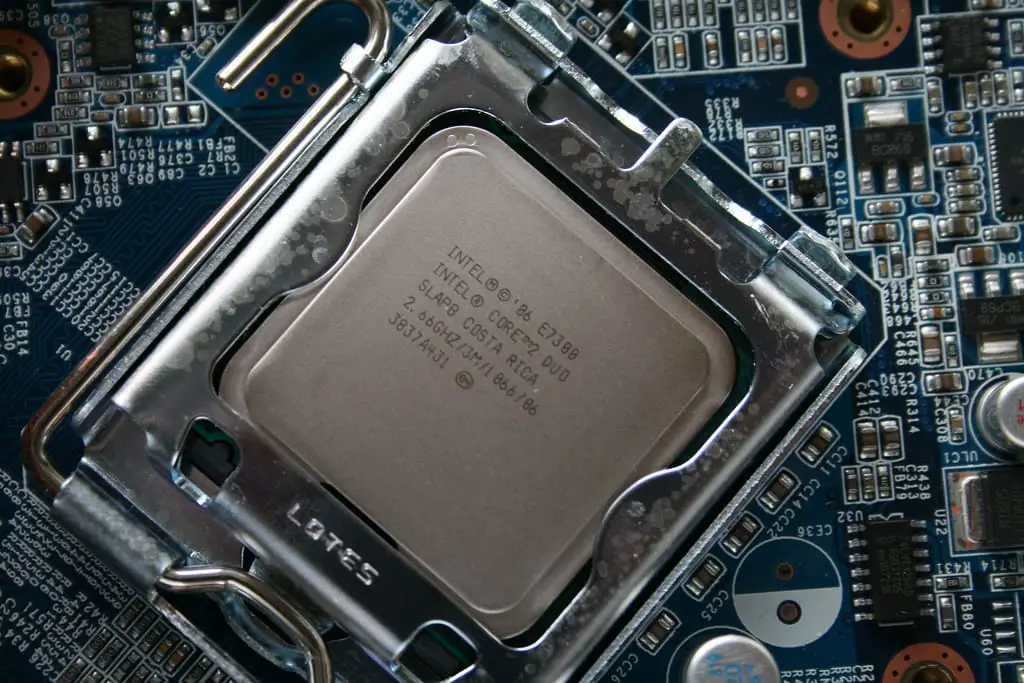The main functioning unit of a computer is the microprocessor chip. It is the central processing unit of a computer, designed on an integrated circuit, and it performs all the calculations and computing operations.
The central processing unit contains millions of small components, such as transistors, resistors, and diodes. These components work together and perform all the computing and processing operations of the computer.
Xeon and Core 2 Duo family of chips are microprocessors manufactured by Intel and are used in many different applications, such as powering handheld devices like tablets to personal computing devices such as laptops and personal computers,
to heavy workload operations such as Databases and Workstations.
Key Takeaways
- Xeon processors are designed for servers and workstations, while Core 2 Duo processors are designed for personal computers.
- Xeon processors have higher clock speeds, larger caches, and support for multiple processors, while Core 2 Duo processors do not.
- Xeon processors are more expensive than Core 2 Duo processors.
Xeon vs Core 2 Duo
The Xeon processor is designed for servers, workstations, and high-end computing systems and is optimized for handling intensive workloads. Core 2 Duo is a processor designed for desktop and laptop computers and optimized for general computing tasks, such as web browsing.

Xeon is a multi-core multiprocessor chip designed and manufactured by Intel. Xeon chips are upgraded variations of the already existing Desktop-Grade multi-core chips, with upgraded features for larger Cache memory and larger RAM.
The provisions for higher cores and larger RAM make Xeon very fast and smooth while performing big data computation.
Core 2 Duo chip is the successor to the Dual Core chip manufactured by Intel. It is a multi-core chip with two cores housed inside the same core block.
These chips were very advanced in the sense that they could use both cores simultaneously for performing a task, which was a great step up from the previous version of microprocessors.
Comparison Table
| Parameters | Xeon | Core 2 Duo |
|---|---|---|
| Definition | Xeon is a variant of the Pentium microprocessor, designed for multiprocessing operations at large Databases and Internet Servers. | Core 2 Duo is a dual-core processor based on the Pentium M microarchitecture and is designed to be the successor of the Core Duo microprocessor. |
| Number of Cores | 2 to 6 cores | 2 cores |
| Bus Speed | 400 MHz – 1333MT/s | 533MHz – 1333MHz |
| Clock Speed | 4.40 GHz (Xeon X-5698) | 3.06Ghz (Extreme X9100) |
| General Application | Xeon processors are used to power workstations and servers. | Core 2 Duo processors are used to power personal computers and laptops. |
What is Xeon?
The Xeon microprocessors are multi-core, multi-process chips designed by Intel and first introduced in the year 1998.
These chips were different build variants of the common desktop CPUs with advanced features, including multiple cores, larger amounts of RAM, larger cache memory, and many services and maintenance-related features provided directly by Intel.
This family of microprocessors was designed specifically for handling large workloads and heavy computational operations, such as dealing with the internet traffic at the Database servers and maintaining server workstations of large networks.
The main purpose of using these chips is to build mainframe computers and non-consumer workstations, which feature multiple cores and threads, which are primarily used to power servers that provide cloud computation.
Accordingly, there are many varieties of Xeon microprocessors available, with a variety of configurations of cores to cater to the ever-increasing demand in Database management and server workstation systems.
Xeon-based systems have many advantages, such as support for a larger amount of RAM, large amounts of cache memory, overclocking capabilities of multiple cores, and many other features that ensure smooth and fast data handling capabilities.

What is Core 2 Duo?
Intel Core 2 Duo microprocessors are Dual-core chips designed and manufactured by Intel in the year 2006 for application in consumer electronic devices. As the name suggests, these microprocessor chips include 2 cores built into the common block.
The main purpose for the manufacturing of this chip was to incorporate the Pentium brand into the desktop and laptop market and to provide a chip to power mainly consumer electronic devices.
The selling point of these chips was their ability to use both cores together simultaneously, which during the time was very impressive as most other machines couldn’t do, and hence these chips were able to take advantage of the presence of two cores.
Another revolutionary feature that these chips had was the ability to support virtualization, which enabled machines that incorporated these chips to run Virtual Machine (VM) software.
These processors were a great step up from the previous family of chips. They greatly revolutionized the personal computer market, as they provided great computing speeds with much higher clocking frequencies.

Main Difference Between Xeon and Core 2 Duo
- Xeon microprocessor is primarily used for building servers and workstations, which use big mainframe computers. Core 2 Duo microprocessor is used in consumer electronic devices like PCs, Laptops and so on.
- Xeon microprocessors have multiple cores and also have multiple threads. Core 2 Duo microprocessors are the successors of Dual core, and this range of microprocessors have 2 cores built inside the same bore block.
- The main advantage of using Xeon in various systems is the flexibility that it provides, with the wide range of configurations of cores and other facilities provided directly by the company. Core 2 Duo revolutionized the consumer electronic market with the boost in CPU speed and higher frequency capabilities, which also paved the way for later multi-core microprocessor chips to be used in the Laptop and PC market.
- Xeon microprocessors are built over existing microprocessor chips, by increasing the number of cores and including provisions for more RAM, cache memory and larger storage in general. This makes Xeon very flexible, and owing to the availability of so many different types, Xeon architectures can be used in a variety of applications. Core 2 Duo chips are mainly used for powering PCs and Laptops because of their ability to use both cores simultaneously together.
- Xeon chips have much larger cache memory. Core 2 Duo chips were a huge step up from the previous generation of chips, with a boost in the clocking frequency and overall computing speed.




